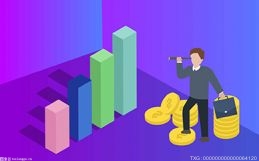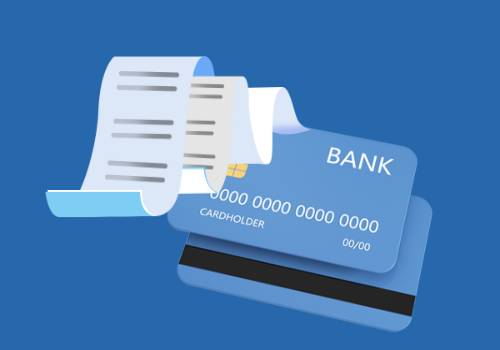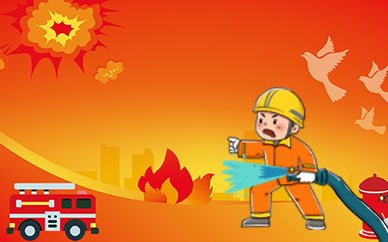U.S. Federal Reserve Chair Jerome Powell attends a press conference in Washington, D.C., the United States, on June 14, 2023. (Xinhua/Liu Jie)
TheU.S.FederalReservehasdecidedtokeepinterestratesunchanged,butsignaledmoreratehikeswillcome.Withinflationstillsignificantlyabovetargetandthebankingcrisisnotyetover,Fedofficialsandmarketwatchersaredividedoverfuturehikes,andthepathaheadmustbedifficult.
 (资料图片仅供参考)
(资料图片仅供参考)
by Xiong Maoling, Matthew Rusling
WASHINGTON, June 15 (Xinhua) -- The U.S. Federal Reserve on Wednesday decided to keep interest rates unchanged, but signaled more rate hikes will come before year end. With inflation still elevated and the banking sector under pressure, the Fed faces tough choices ahead.
WHY PAUSE NOW?
Since the start of this tightening cycle in March 2022, the Fed has raised interest rates 10 times in a row, with a cumulative increase of 500 basis points, the fastest pace of rate hikes since the 1980s.
Beginning this year, the Fed has slowed the pace of rate hikes, raising rates by 25 basis points at each of its past three meetings. After the May meeting, the target range for the federal funds rate was 5 to 5.25 percent.
"Holding the target range steady at this meeting allows the Committee to assess additional information and its implications for monetary policy," the Federal Open Market Committee (FOMC), the Fed"s policy-setting body, said in a statement after a two-day policy meeting.
In determining the extent of additional policy firming that may be appropriate to return inflation to 2 percent over time, "the Committee will take into account the cumulative tightening of monetary policy, the lags with which monetary policy affects economic activity and inflation, and economic and financial developments," the statement said.
Desmond Lachman, a senior fellow at the American Enterprise Institute and a former official at the International Monetary Fund, told Xinhua that it "makes sense" for the Fed to take a pause, in order to see what the full effects of its monetary policies will be.
A pause also makes sense because of signs that the economy is cooling; because there are considerable strains in the financial system due to sharp rate hikes; and because the broad money supply is now contracting, Lachman said.
The Fed has pushed interest rates to their highest level in 16 years, putting a growing damper on U.S. economic growth. Real gross domestic product (GDP) grew at an annualized rate of 1.1 percent in the first quarter, down sharply from 2.6 percent in the fourth quarter of last year.
While the labor market remains robust, consumer confidence fell in May. "Consumers" view of current conditions became somewhat less upbeat while their expectations remained gloomy," said Ataman Ozyildirim, senior director of economics at The Conference Board. "Their assessment of current employment conditions saw the most significant deterioration."
People queue up outside the headquarters of the Silicon Valley Bank (SVB) in Santa Clara, California, the United States, March 13, 2023. (Photo by Li Jianguo/Xinhua)
The Fed"s aggressive rate hikes have also rattled the banking sector, triggering the closure of Silicon Valley Bank and Signature Bank in March and the seizure of First Republic Bank in early May.
Dean Maki, chief economist at hedge fund Point72 Asset Management, said the bank failures in March are leading the Fed to "hike less aggressively" than they would have otherwise.
WHAT"S NEXT?
The latest pause does not mark the end of the Fed"s current tightening cycle. At the post-meeting press conference, Fed Chair Jerome Powell said that almost all FOMC members expect further interest rate hikes this year will be appropriate.
According to the latest quarterly economic projections, Fed officials" median forecast for the federal funds rate at the end of this year is 5.6 percent, higher than the 5.1 percent projected in March.
The "dot plot" shows that 12 of the 18 Fed officials think rates should rise to at least 5.5 percent to 5.75 percent by the end of this year, with three of them believing rates should be even higher. That means the Fed may raise rates by 50 basis points later this year.
Michael Gapen, head of U.S. economics at Bank of America, said it came as a surprise that Fed officials" forecast for the federal funds rate this year was 50 basis points higher than their March forecast. Based on that change, he expects the Fed to raise rates by 25 basis points in July and again in September.
The Fed has not yet made a decision on whether to raise interest rates at its July meeting, but according to the CME FedWatch Tool, traders currently see over 70 percent chance of a quarter percentage point rate hike in July.
Powell said that it is still possible to achieve the inflation target without triggering a recession, but the economy will likely bear some pain. He also said it would be appropriate for the Fed to cut rates only after inflation had really come down significantly, adding that no committee member expects a rate cut this year.
A customer shops at a supermarket in San Mateo, California, the United States, April 12, 2023.(Photo by Li Jianguo/Xinhua)
With inflation still significantly above target and the banking crisis not yet over, Fed officials, as well as market watchers, are divided over future rate hikes, and the path ahead is bound to be difficult.
The Fed chair finds himself in a place no central banker wants to be: working to avert a credit crunch, which calls for looser monetary policy, while fighting high inflation, which demands the opposite, The Wall Street Journal reported.
POLITICAL IMPACT
How did the central bank wind up in the situation? Analysts said the Fed is in the current predicament because it misjudged inflation earlier, which led to the worst U.S. inflation in four decades. It then had to raise interest rates aggressively, posing risks to financial stability and economic development.
In 2021, the Fed made the mistake of keeping interest rates "too low for too long" at a time that the economy was receiving its largest peacetime budget stimulus, Lachman said, referring to the massive COVID-19 relief. "The net result was that we got multi-decade high inflation," he said.
The Fed does not want to make the mistake of throwing the economy into a deep recession by continuing to raise interest rates, and to engage in "monetary policy overkill" to regain inflation control, Lachman said.
U.S. Treasury Secretary Janet Yellen said in March that the Fed"s continued interest rate hikes were the main reasons for the bank closures. In a recent interview with CNBC, Yellen said that given the overall environment of the banking industry, she wouldn"t be surprised to see more consolidation among some smaller banks.
U.S. Treasury Secretary Janet Yellen testifies during a Senate Banking, Housing, and Urban Affairs Committee hearing in Washington, D.C., the United States, on Sept. 28, 2021. (Matt McClain/Pool via Xinhua)
Even as higher rates slow economic growth and strain the banking sector, the Fed has signaled further rate hikes, mainly because inflation remains well above its 2 percent long-term target.
The U.S. consumer price index (CPI) posted year-on-year growth of 4 percent in May, the lowest level since March 2021, according to data from the U.S. Bureau of Labor Statistics. But core CPI, which excludes the volatile food and energy prices, rose 5.3 percent.
In a sign of concerns about the stickiness of inflation, Fed officials" forecast for this year"s core personal consumption expenditure price index -- its preferred inflation gauge -- was 3.9 percent, compared with 3.6 percent in March projection. Even Powell said that "the process of getting inflation down is going to be a gradual one."
Sixty-one percent of Americans said they were experiencing financial hardship from inflation, up from 56 percent in November, according to a recent Gallup poll.
"I think high prices and inflation have hurt Biden for the last couple of years -- that"s a big part of why his approval ratings seem stuck in the low-mid 40s," Christopher Galdieri, professor at Saint Anselm College, told Xinhua.
This is going to be a "strong headwind" for his re-election, barring a dramatic turnaround in inflation, Galdieri said.
 请问厨房橱柜台面用什么材料做的好_厨房橱柜台面用什么材料好
请问厨房橱柜台面用什么材料做的好_厨房橱柜台面用什么材料好
 环球热文:5月70城新建住宅价格环比上涨城市个数减少
环球热文:5月70城新建住宅价格环比上涨城市个数减少
 我叫王土地主题曲开头_我叫王土地主题曲
我叫王土地主题曲开头_我叫王土地主题曲
 salary和wage的区别_热点评
salary和wage的区别_热点评
 全球最新:锦胜集团(控股)(00794)发盈警 预期年度除税前净亏损扩大约22%
全球最新:锦胜集团(控股)(00794)发盈警 预期年度除税前净亏损扩大约22%
 快船球队管理层忙布局!打感情牌,想威少380万美元续约
快船球队管理层忙布局!打感情牌,想威少380万美元续约
 房地产寒冷中现“散点”热源,洗牌加速,一批“地产新势力”入场-环球精选
房地产寒冷中现“散点”热源,洗牌加速,一批“地产新势力”入场-环球精选
 王者游戏中前期防御塔保护机制时间范围_王者荣耀游戏中前期防御塔保护机制
王者游戏中前期防御塔保护机制时间范围_王者荣耀游戏中前期防御塔保护机制
 《星电音联盟》官宣 凤凰传奇带“电”上线 全球看热讯
《星电音联盟》官宣 凤凰传奇带“电”上线 全球看热讯
 云南白药CEO董明谈云南白药的“变与不变” 全球视讯
云南白药CEO董明谈云南白药的“变与不变” 全球视讯